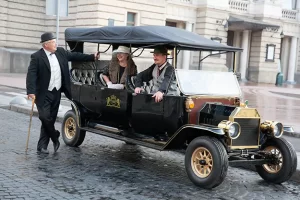To start driving, depress the gas pedal to start the motor. The motor then supplies energy to the gears that spin the tires. When you put more torque on the pedals, the rotating magnetic field pulls on the rotor, which spins faster than the stator. When you release the gas pedal, the rotating magnetic field stops. This causes the rotor to spin faster than the stator, thereby charging the battery.
Electric motors vary in size and power
Classic electric vehicles are powered by electric motors of varying sizes and power. These motors were used in the early days of electric vehicles. Electric vehicles use lead-acid batteries. Compared to today’s EVs, these motors have much lower starting currents, making them ideal for small cars.
Large electric motors can produce 500 horsepower and require custom halfshafts to propel the car. The electric motor can also drive a single-speed transmission. Using the original gearbox saves the cost of retrofitting a classic electric car.
Electric motors are classified according to their construction and power. They can be AC or DC powered, brushed or shaded. The size of the air gap affects the electrical characteristics of the motor. Excessive clearance reduces power factor and impairs motor performance. Narrow gaps are better than wide gaps. Using too small a gap can also create problems such as noise and mechanical losses.
The inverter sends power to the motor based on how hard the pedal is pressed
Classic electric cars run on battery power and send electricity to the motor depending on how hard the pedal is pressed. The motor converts electrical energy into mechanical energy, which turns the wheels. Electric motors have a wide range of power outputs and are available in different types and sizes.
Classic electric cars use powerful motors and controllers to send electricity to the wheels. The controller is a solid-state electronic box that controls the amount of power sent to the motor. The controller is designed for series motors and operates from 48-72 volts. A higher voltage controller will result in greater acceleration and a higher top speed.

An alternator is a component that supplies power to a motor through a series of coils. This energy is converted into mechanical energy by a series of magnets that act as electromagnets. The magnetic force in the core pushes the magnetic force in the outer barrel, which turns the motor. This mechanical movement enables the electric motor to reach a top speed of 62 mph in under two seconds.
The alternator converts the rotation to a speed that can be used by the rest of the drivetrain
The alternator is a mechanical component in a classic electric vehicle drivetrain. It converts rotational energy into electrical energy through a magnetic field. However, as the magnetic field slows, the alternator cannot provide a constant supply of energy. Therefore, it needs constant energy replenishment to operate.
The alternator consists of two parts: the voltage regulator circuit and the brush group. The regulator circuit is connected to the stator coils and the brush packs are connected to the regulator. The alternator is made of coarse enameled copper wire. The regulator/brush pack is attached to the stator coil and spot welded or soldered to the regulator circuit. Generally speaking, disassembling an alternator is easy. The alternator also contains a regulator and two slip rings.
About Our
RARIRO bike/trolley has one of the highest power-to-weight ratios in electric vehicles and is known for its speed and reputation.
Over the past four years, we have accumulated rich experience in product development, production and marketing at home and abroad. Our customers include many well-known companies at home and abroad, such as Switzerland, the Hungarian royal family and the Middle East sheikhs.
Our products are sold to distributors and retailers in the Americas, Europe and Asia. We are committed to providing the greenest products possible while keeping costs reasonable.
Our future goal is to continuously expand our business to meet the changing demands of the global market.











